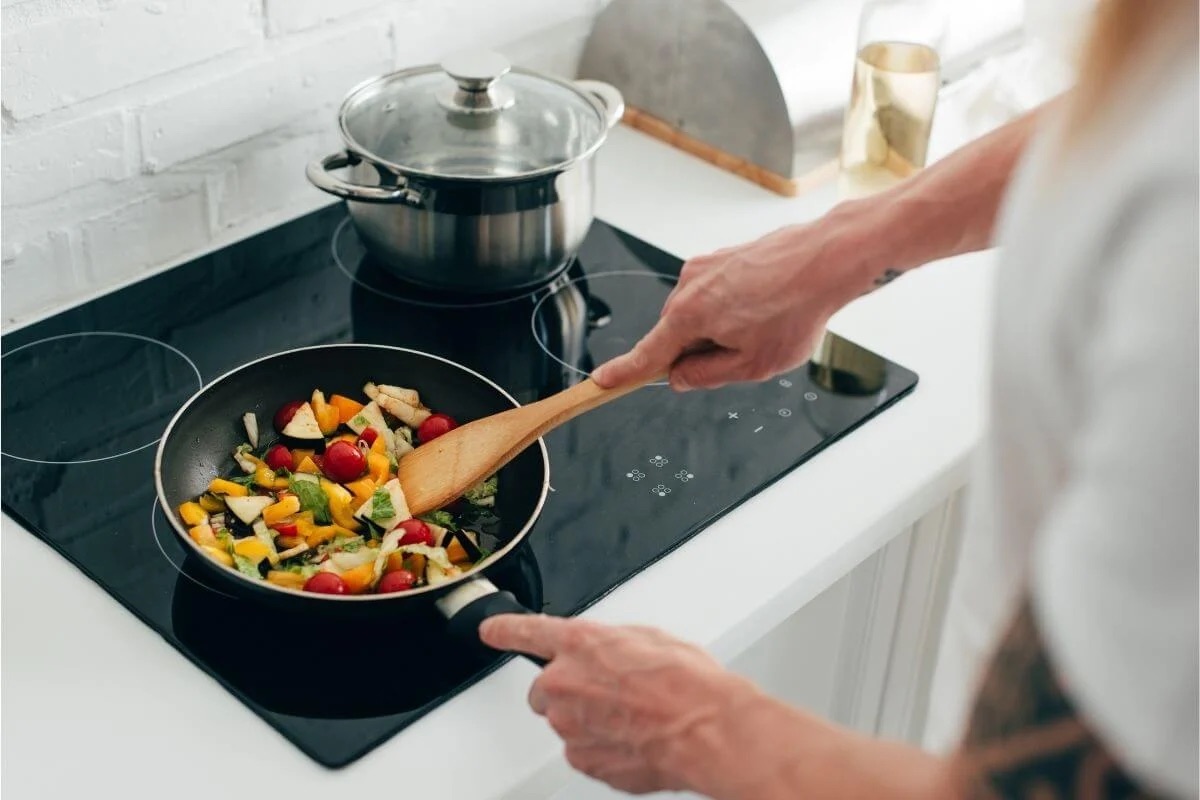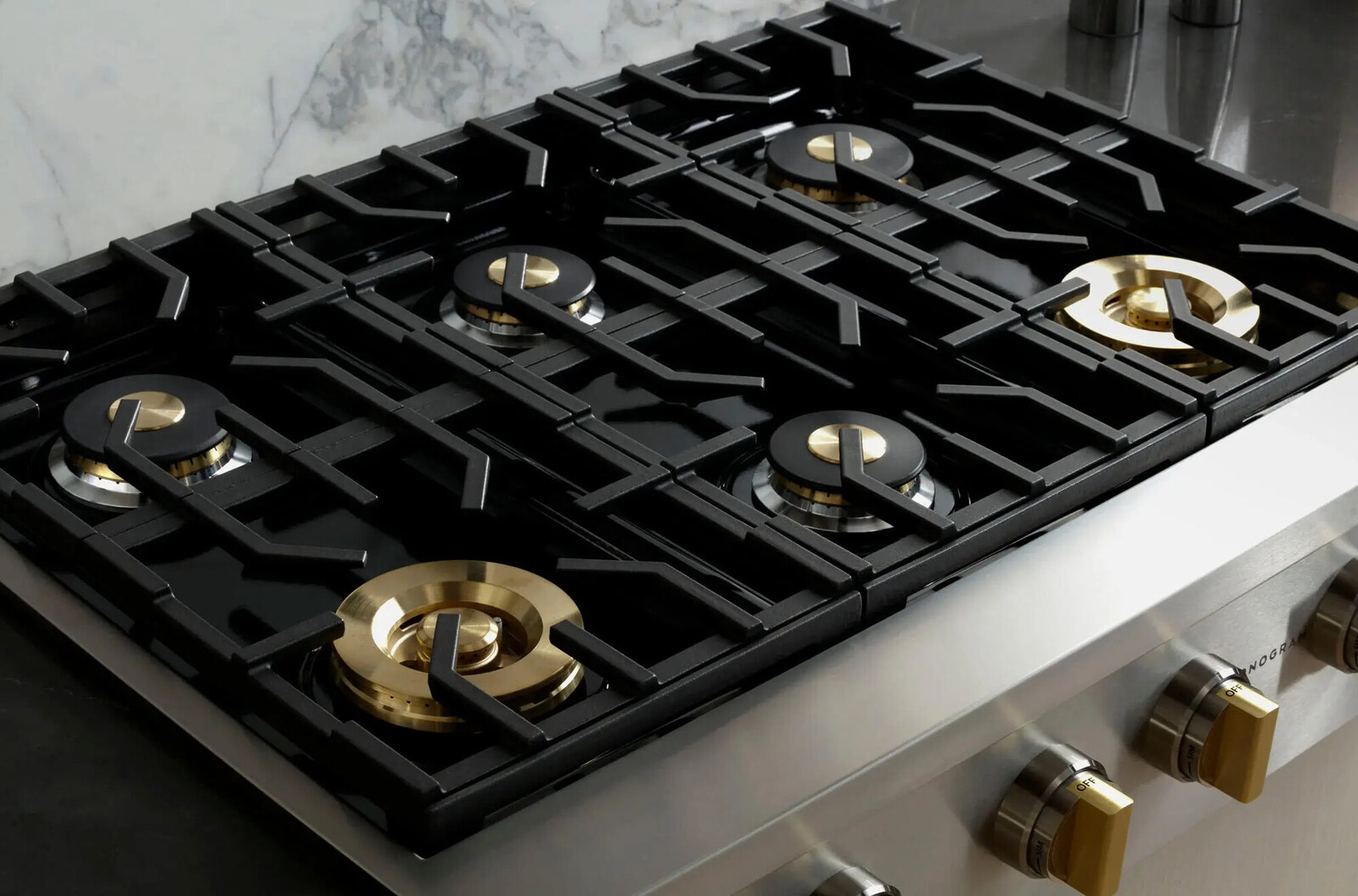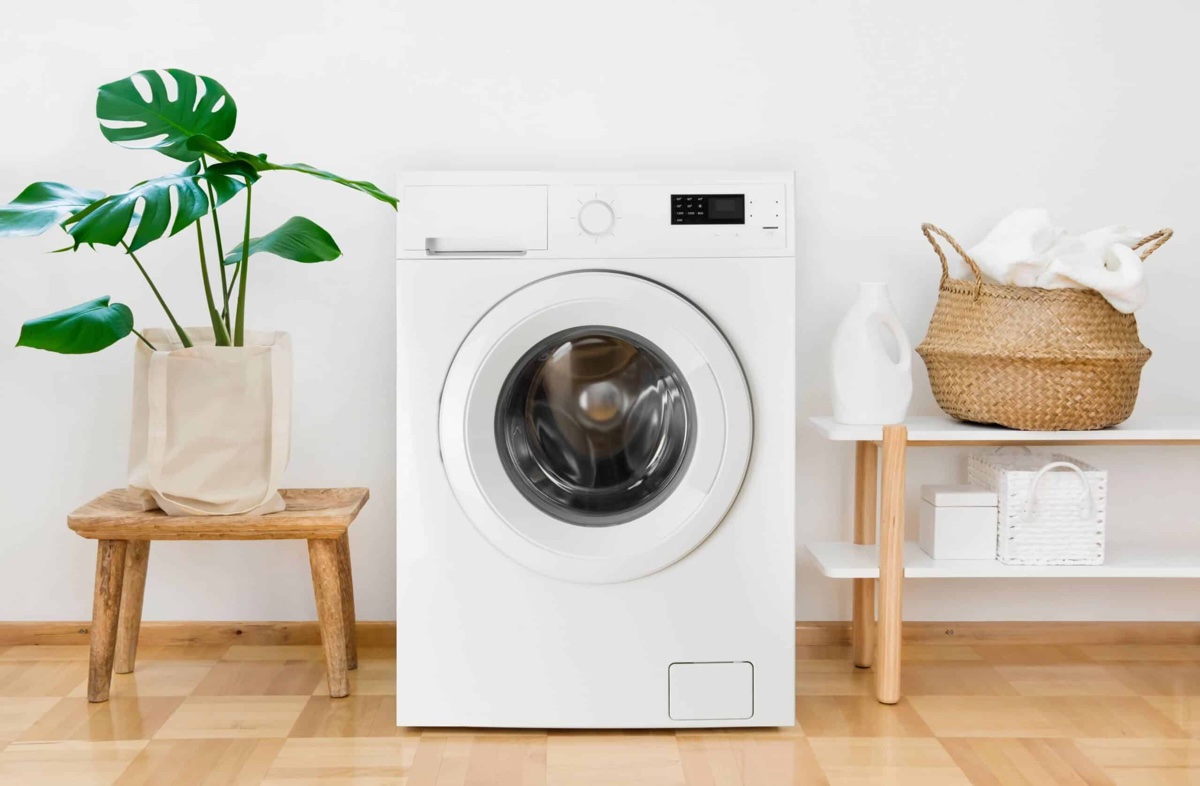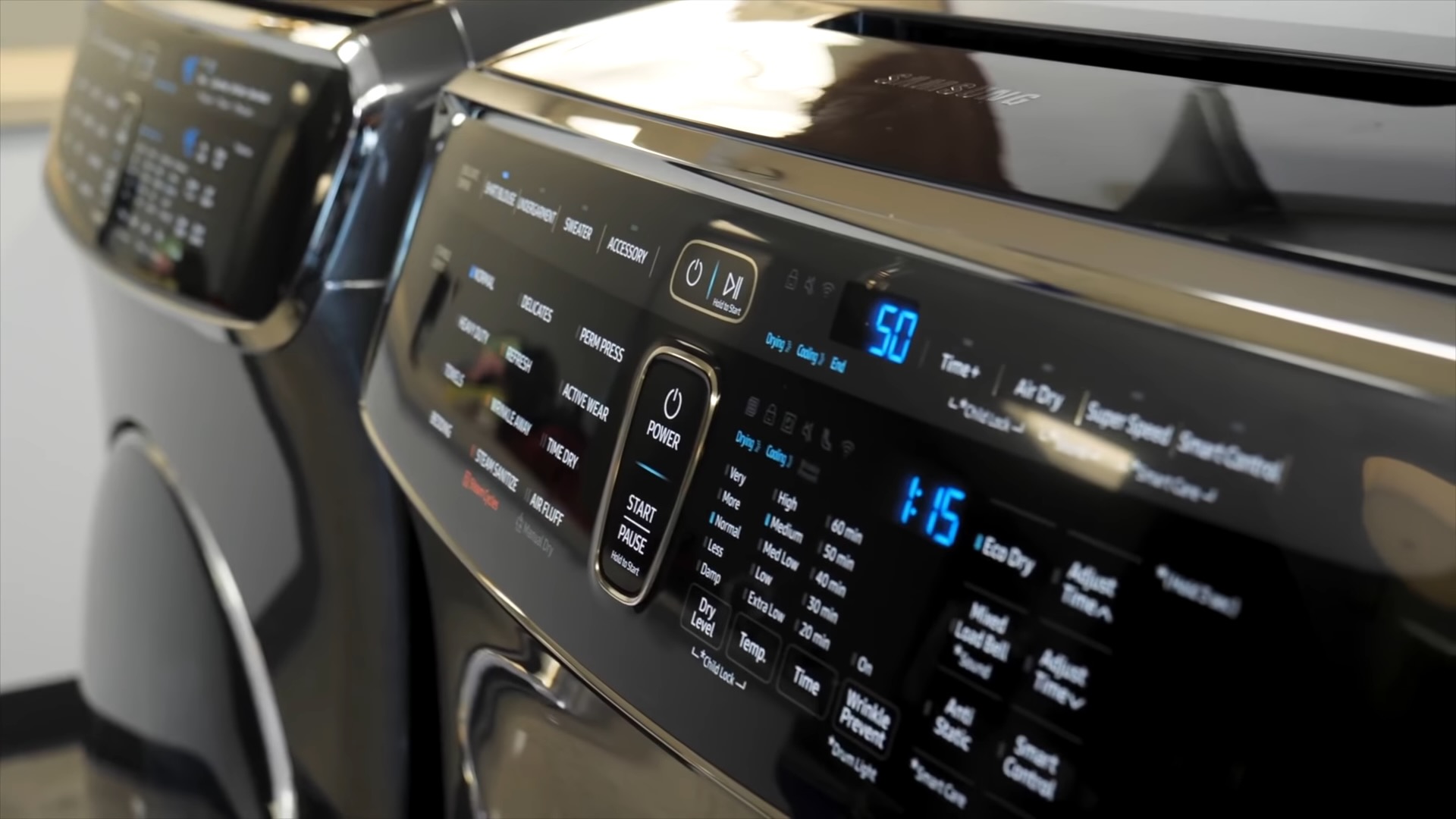

Articles
How Many Amps Does A Stove Top Use
Modified: August 28, 2024
Discover the average number of amps a stove top uses with our informative articles. Learn how to calculate and optimize your stove's electricity consumption.
(Many of the links in this article redirect to a specific reviewed product. Your purchase of these products through affiliate links helps to generate commission for Storables.com, at no extra cost. Learn more)
Introduction
Welcome to our comprehensive guide on understanding how many amps a stove top uses. Whether you’re a culinary expert or a newbie in the kitchen, it’s important to have a basic understanding of the electrical requirements for your stove top. By understanding the amps needed for your stove top, you can ensure safe and efficient operation in your kitchen.
When it comes to kitchen appliances, stoves are known for their power-hungry nature. They are responsible for cooking and heating our meals, and they require a significant amount of electricity to operate. Having a clear understanding of the electrical requirements for your stove top will not only help you make informed decisions but also prevent any electrical issues in your home.
In this article, we will break down the concept of amps and explore how electric stove tops work. We will also discuss the various factors that can affect amp usage and provide tips on how to use your stove top more efficiently. So, let’s dive in and learn more about the amps required for a stove top.
Key Takeaways:
- Understanding the amp requirements for your electric stove top is crucial for safe and efficient cooking. By grasping the concept of amps and implementing energy-saving tips, you can optimize your kitchen’s power consumption and enjoy a well-functioning appliance.
- Factors such as heating element size, heat settings, and cookware choice can impact the amp usage of your stove top. By considering these factors and following efficient cooking practices, you can manage power consumption effectively and ensure the safe operation of your appliance.
Read more: How Many Amps Does A Cooktop Use
Understanding Amps
Before we delve into how many amps a stove top uses, it’s important to have a clear understanding of what exactly amps are. Ampere, abbreviated as amp, is the unit of measurement for electric current. It represents the rate at which electric charges flow through a conductor. In simpler terms, amps measure the amount of electricity flowing through a circuit.
Electricity is essentially the movement of electrons through a conductive material, such as copper wires. The flow of electrons creates an electric current, which is measured in amps. Think of amps as the volume of water flowing through a pipe – the higher the amps, the more electricity is flowing through the circuit.
Now, you might be wondering, how does this relate to your stove top? Well, the amps required by your stove top determine the amount of electricity it needs to operate efficiently. Different appliances have different amp requirements, and it’s essential to know the specific amp rating for your stove top.
In general, stoves and other kitchen appliances require higher amp ratings compared to smaller devices like lamps or cell phone chargers. This is because stoves need a substantial amount of power to heat up quickly and maintain a consistent temperature. Understanding the amp rating of your stove top will help ensure you have the appropriate electrical setup in your kitchen.
Next, let’s explore how electric stove tops work and how they draw the necessary amps to provide heat for cooking.
How Electric Stove Tops Work
Electric stove tops are a common choice in many kitchens due to their convenience and ease of use. Unlike gas stoves, electric stove tops rely on the flow of electricity to generate heat for cooking. Understanding how electric stove tops work can help you better grasp their amp requirements.
Electric stove tops consist of heating elements, typically made of coiled metal, which generate heat when an electric current passes through them. When you turn on the stove top, electricity flows through the heating elements, causing them to heat up. The heat then transfers to the cookware, allowing you to cook your food.
Each heating element on the stove top requires a specific amount of amps to operate efficiently. The total amp rating for your electric stove top is the sum of the amp ratings for all its heating elements. This rating determines the electrical capacity needed to power the stove top adequately.
Electric stove tops usually have different-sized heating elements to accommodate various cookware sizes. Smaller heating elements require fewer amps, while larger ones require more. This design allows you to match the heat output to the size of your pots and pans, promoting energy efficiency in the kitchen.
Additionally, electric stove tops often come with different heat settings or burners. These settings allow you to adjust the temperature for different cooking needs, such as simmering, boiling, or searing. The amp usage may vary depending on the heat setting you choose. Higher heat settings typically require more amps to produce the desired level of heat.
Now that we have discussed how electric stove tops work, the next section will delve into the specific amp requirements for these appliances.
Amps for Electric Stove Tops
The amp requirements for electric stove tops can vary depending on the size and power of the heating elements. Most residential electric stove tops operate on 208 to 240 volts and typically have amp ratings ranging from 30 to 50 amps.
For example, a standard electric stove top with four heating elements may have an amp rating of around 40 amps. This means that when the stove top is in use, it will draw approximately 40 amps of electricity to power all the heating elements simultaneously.
It’s important to note that the amp rating mentioned here is just for the stove top itself, and the associated oven may have its own separate amp rating. Some freestanding electric stoves combine the stove top and oven, requiring a higher amp rating to power both components.
If you’re upgrading your stove top or installing a new one, it’s crucial to check the manufacturer’s guidelines or consult a professional to determine the specific amp requirements for your appliance. This ensures that you have the appropriate electrical setup in your kitchen to handle the power demands of your stove top.
Understanding the amp requirements for electric stove tops allows you to make informed decisions when it comes to electrical installations and upgrades. It ensures that your stove top operates efficiently and without overloading your electrical system.
Next, let’s explore the factors that can affect amp usage for electric stove tops.
When determining the amps a stove top uses, you can use the formula: Watts = Volts x Amps. So, if you know the wattage of the stove top and the voltage it operates on, you can calculate the amperage it uses.
Factors Affecting Amp Usage
Several factors can influence the amp usage of an electric stove top. Understanding these factors can help you manage your power consumption and ensure the safe and efficient operation of your appliance.
1. Heating Element Size: The size of the heating elements on your stove top can impact the amp usage. Larger heating elements generally require more amps to generate higher levels of heat. Using smaller burners or adjusting the heat settings can help reduce the overall amp usage.
2. Heat Settings: The heat setting you choose on your stove top can also affect the amp usage. Higher heat settings typically require more amps to produce the desired level of heat. Using lower heat settings, when appropriate, can help conserve energy and reduce amp usage.
3. Simultaneous Use: If you’re using multiple heating elements on your stove top simultaneously, the amp usage will increase. For example, if you’re using all four burners at the same time, the amp draw will be higher compared to using just one or two burners. Being mindful of your cooking needs and only using the necessary burners can help manage amp usage.
4. Cookware Size and Material: The size and material of the cookware you use can affect the amp usage of your stove top. Using larger pots and pans with a larger surface area can distribute the heat more effectively, reducing the need for high amp usage. Additionally, using cookware with induction-compatible materials, such as stainless steel or cast iron, can help optimize energy transfer and lower amp usage.
5. Insulation and Ventilation: The insulation around your stove top and proper ventilation in your kitchen can also impact the amp usage. Good insulation helps to retain the heat generated by the stove top, reducing the need for constant heating and thus lowering the amp usage. Adequate ventilation prevents the stove top from overheating and allows for efficient operation.
By keeping these factors in mind, you can make adjustments and adopt efficient practices to optimize the amp usage of your electric stove top.
Next, we will discuss how to determine the specific amps needed for your stove top.
Read more: How Many Watts Does A Stove Top Use
Determining the Amps Needed
To determine the specific amp requirements for your electric stove top, you will need to consider a few key factors. These factors will help you understand the electrical capacity required to power your stove top safely and efficiently.
1. Manufacturer’s Documentation: The first step is to refer to the manufacturer’s documentation or user manual of your electric stove top. The manual should provide detailed information about the specific amp rating for your appliance. It is important to follow the manufacturer’s recommendations to ensure safe operation.
2. Heating Element Amps: Take note of the amp rating for each individual heating element on your stove top. Add up the amp ratings for all the heating elements to calculate the total amps required. This will give you a clear understanding of the electrical capacity needed for your stove top.
3. Extra Features: Consider any additional features that your stove top may have, such as a built-in grill or a convection oven. These features may require additional amps to operate. Check the manufacturer’s documentation or consult a professional to determine the amp requirements for these extra features.
4. Circuit Capacity: Evaluate the capacity of the circuit or electrical panel in your home. Check the amp rating of the circuit breaker dedicated to your kitchen’s electrical outlets. Ensure that it can handle the amp requirements of your stove top. If necessary, consult an electrician to upgrade the circuit or install a dedicated circuit for your stove top.
By considering these factors and gathering the necessary information, you can determine the specific amp requirements for your electric stove top. This will ensure that your electrical system can safely handle the power demands of your appliance.
In the next section, we will provide some tips for using your stove top more efficiently to optimize energy consumption.
Tips for Efficient Stove Top Use
Using your stove top efficiently not only helps to conserve energy but also promotes safe and effective cooking. Here are some tips to maximize the efficiency of your stove top:
- Match Cookware to Heating Element: Use appropriately sized cookware that matches the size of the heating element. Using a small pot on a large burner wastes energy, as heat escapes around the sides. Conversely, using a large pot on a small burner takes longer to heat up.
- Use Flat-Bottomed Cookware: Flat-bottomed cookware ensures maximum contact with the heating element, allowing for better heat transfer and faster cooking time. Avoid using warped or curved-bottomed cookware, as it can result in uneven heat distribution.
- Cover Pots and Pans: Keep pots and pans covered while cooking whenever possible. This helps to trap the heat and reduces cooking time, saving energy in the process.
- Preheat Efficiently: Preheating is necessary for some recipes, but avoid excessive preheating time. Many stovetop cooking methods, such as boiling water or sautéing, don’t require preheating. By skipping this step, you can conserve energy and reduce overall cooking time.
- Use the Right Burner Size: Use burners that match the size of your cookware. A small pan on a large burner wastes heat. Additionally, using smaller burners for low-heat cooking tasks can help to save energy.
- Don’t Overfill Pots or Pans: Overfilling pots and pans can lead to longer cooking times and uneven heat distribution. Optimize energy usage by cooking in smaller batches or using appropriately sized cookware.
- Keep Burners and Drip Pans Clean: Regularly clean your burners and drip pans to remove any built-up grease or residue. This ensures efficient heat transfer and prevents any blockages that can hinder performance.
- Avoid Boil-Overs: When cooking liquids, ensure proper pot size and watch for boil-overs. Boil-overs not only waste energy but also create a mess and can be a safety hazard.
- Use Residual Heat: Take advantage of residual heat by turning off the burner a few minutes before the cooking time is complete. The retained heat will continue cooking the food, saving energy in the process.
- Unplug Unused Appliances: When not in use, unplug small appliances, such as toasters or electric kettles, that are often left plugged in. These devices draw a small amount of power even when not in use.
- Properly Maintain Your Stove Top: Regularly clean and maintain your stove top to ensure optimal performance. This includes cleaning the control knobs, checking the wiring, and replacing any faulty parts. A well-maintained stove top operates more efficiently.
By implementing these tips, you can make your stove top more energy-efficient and reduce your overall energy consumption in the kitchen.
Now, let’s conclude our article on understanding how many amps a stove top uses.
Conclusion
Understanding the amp requirements for your electric stove top is essential for safe and efficient operation in your kitchen. By having a clear understanding of amps and how they relate to your stove top, you can make informed decisions about your electrical setup and optimize energy consumption.
We explored the concept of amps and how they measure the flow of electric current. We learned that electric stove tops rely on the flow of electricity to generate heat for cooking, and the amp requirements for stove tops can vary based on the size and power of the heating elements.
Factors such as heating element size, heat settings, simultaneous use, cookware size, and insulation can affect the amp usage of your stove top. It is important to consider these factors to manage your power consumption effectively and ensure the safe operation of your appliance.
To determine the specific amps needed for your stove top, refer to the manufacturer’s documentation, consider the amp ratings for individual heating elements, and evaluate your circuit capacity. This information will guide you in selecting the appropriate electrical setup for your appliance.
We also provided tips for efficient stove top use, including matching cookware to heating elements, covering pots and pans, preheating efficiently, and using the right burner size. By following these tips, you can maximize energy efficiency and reduce wasted power in your kitchen.
In conclusion, understanding the amps required for your electric stove top plays a vital role in ensuring safe and efficient cooking. By being aware of amp ratings, practicing efficient stove top usage, and maintaining your appliance properly, you can enjoy a well-functioning and energy-efficient kitchen.
Remember to always refer to the manufacturer’s guidelines and consult with professionals when making any modifications or upgrades to your electrical system. Safety should always be a top priority when working with electricity in your home.
We hope this article has provided valuable insights into how many amps a stove top uses and how to optimize its usage. Happy cooking!
Frequently Asked Questions about How Many Amps Does A Stove Top Use
Was this page helpful?
At Storables.com, we guarantee accurate and reliable information. Our content, validated by Expert Board Contributors, is crafted following stringent Editorial Policies. We're committed to providing you with well-researched, expert-backed insights for all your informational needs.















0 thoughts on “How Many Amps Does A Stove Top Use”